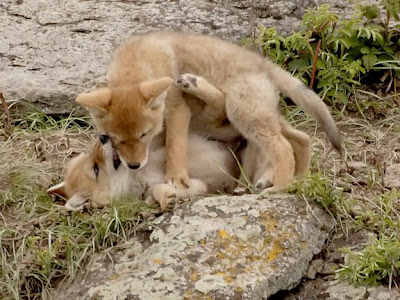10) 2008 was a great year to photograph warblers here in south east Minnesota. The spring migration started off later then usual, mostly due to winter hanging on for so long, but it also lasted longer then usual. So we ended up with around a month of warblers migrating through. This pic was one of the first that I got of a blackburnian warbler making it a lifer for me, I do not count a bird on my life list until I have a pic.
9) One of the best action pics that I took last year was this eagle fishing in the river near Prescott, WI back in January of 2008. The eagles gathering around open water in southern Minnesota during the winter time is what really got me started into wildlife photography.

8) I have photographed a few kestrels over the years but this fellow that I photographed in Yellowstone is the only one that was good looking, close, in good light and not on a telephone line.

7) In 2008 I traveled to South Dakota to participate in a shorebird workshop. The workshop was great but I got a bonus when I got to photograph a burrowing owl that was regularly visiting a field in the area.

6) In 2008 I had an opportunity to photograph many new species that I had not photographed before. Some of these species were so rare that they are on the Federal Endangered Species List. This is the case with the endangered Karner blue butterfly that I photographed at Necedah NWR in June.
5) On a return trip to Necadah NWR in October I got the opportunity to photograph another endangered species as a pair of whooping cranes flew over head.

4) In the winter of 2007-2008 I made numerous attempts to find and photograph a snowy owl that was wintering at the MSP airport. Unfortunately my timing was always off and I never saw the owl. This year I have seen more then one snowy at the airport including this one that was nice enough to pose for some close ups.

3) In 2008 I expanded my collection of dragonfly images by quite a bit. After dabbling in 2007 I got quite serious in 2008 and scored a few pics of the dragon that was on the top of my most wanted list, the calico pennant.

2) The most exciting lifer that I photographed in 2008 came during our Yellowstone trip, and it was not a bird. After eight trips to Yellowstone, and many trips to northern Minnesota, I finally was able to see and photograph a wolf up close and personal.

1) The number one pic was one of the few pics to grace the blog that were taken by me. This pic was taken by my wife Michelle and it is a pic a me holding an immature eagle that I was about to release. This picture is my favorite because it brings back very strong personal memories and feelings. This was the eagle that I rescued out of Crex Meadows in August of 2007 and was able to release, through The Raptor Center, down at Redwing, MN in February.
 Well I hope that you enjoy reading this post as much as I enjoyed putting it together. Let me know what you think or if you have a favorite pic that was not on the list please list it in the comment section.
Well I hope that you enjoy reading this post as much as I enjoyed putting it together. Let me know what you think or if you have a favorite pic that was not on the list please list it in the comment section.

4) In the winter of 2007-2008 I made numerous attempts to find and photograph a snowy owl that was wintering at the MSP airport. Unfortunately my timing was always off and I never saw the owl. This year I have seen more then one snowy at the airport including this one that was nice enough to pose for some close ups.

3) In 2008 I expanded my collection of dragonfly images by quite a bit. After dabbling in 2007 I got quite serious in 2008 and scored a few pics of the dragon that was on the top of my most wanted list, the calico pennant.

2) The most exciting lifer that I photographed in 2008 came during our Yellowstone trip, and it was not a bird. After eight trips to Yellowstone, and many trips to northern Minnesota, I finally was able to see and photograph a wolf up close and personal.

1) The number one pic was one of the few pics to grace the blog that were taken by me. This pic was taken by my wife Michelle and it is a pic a me holding an immature eagle that I was about to release. This picture is my favorite because it brings back very strong personal memories and feelings. This was the eagle that I rescued out of Crex Meadows in August of 2007 and was able to release, through The Raptor Center, down at Redwing, MN in February.
 Well I hope that you enjoy reading this post as much as I enjoyed putting it together. Let me know what you think or if you have a favorite pic that was not on the list please list it in the comment section.
Well I hope that you enjoy reading this post as much as I enjoyed putting it together. Let me know what you think or if you have a favorite pic that was not on the list please list it in the comment section. I would like to thank you all very much for your support of the Ecobirder blog in 2008 and hope that you will come back and visit again in 2009.













































